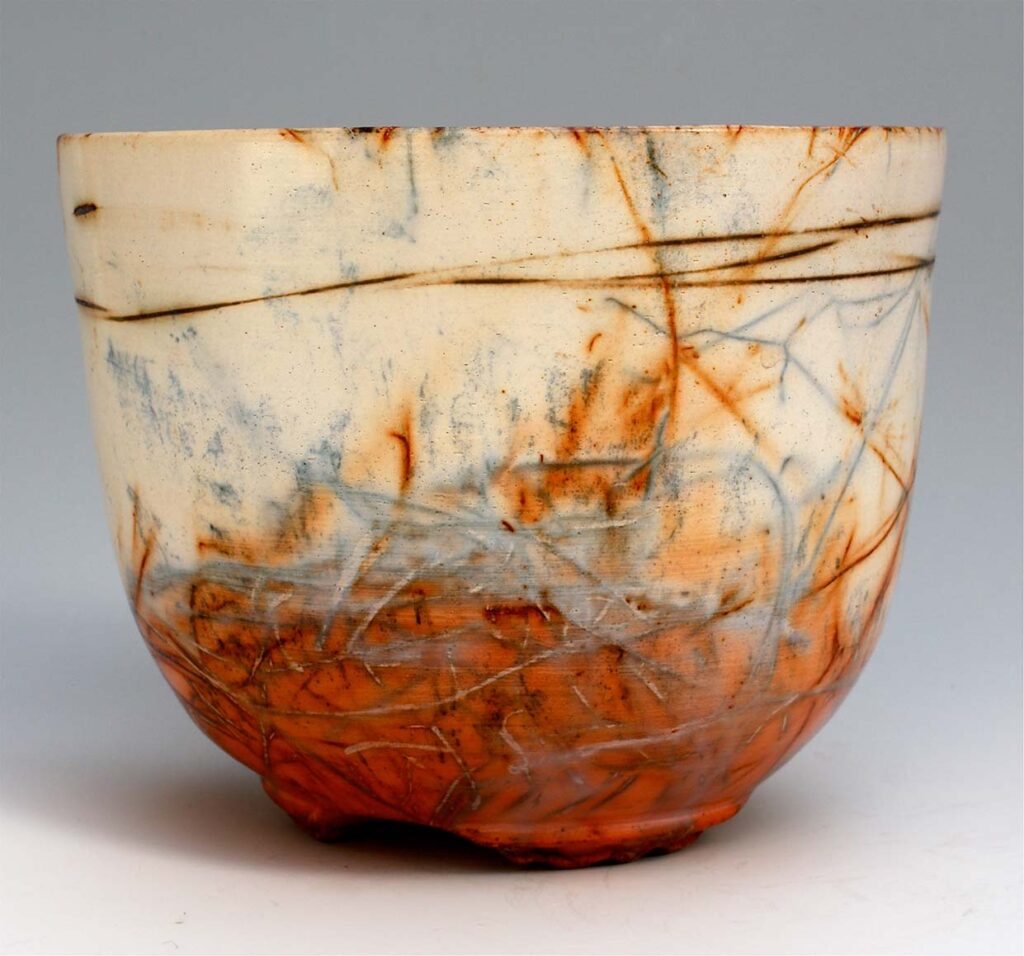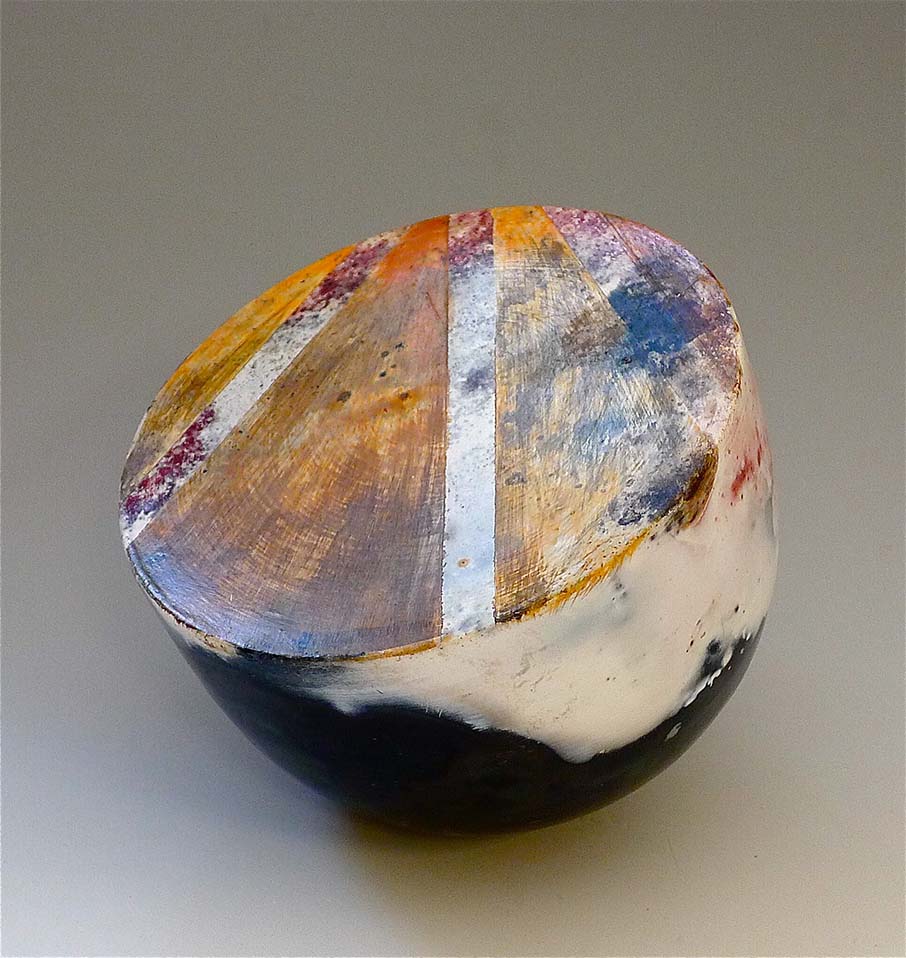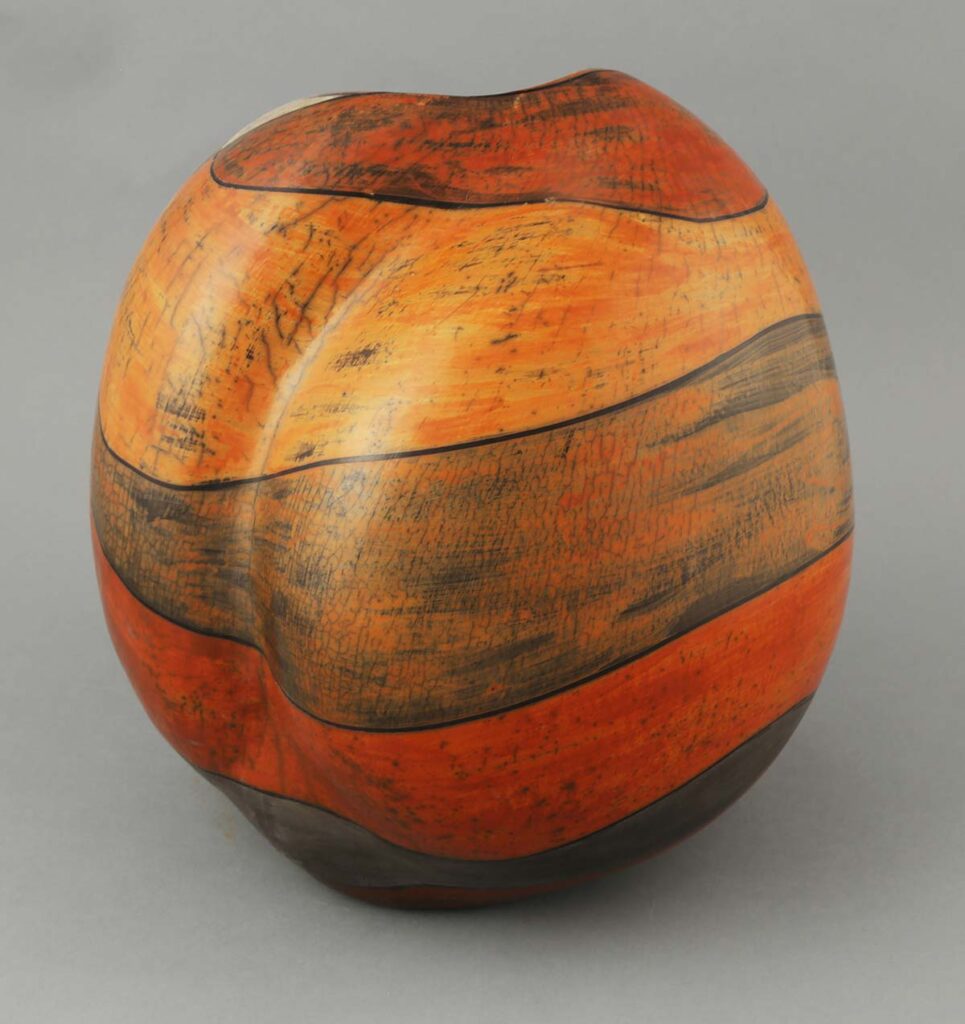
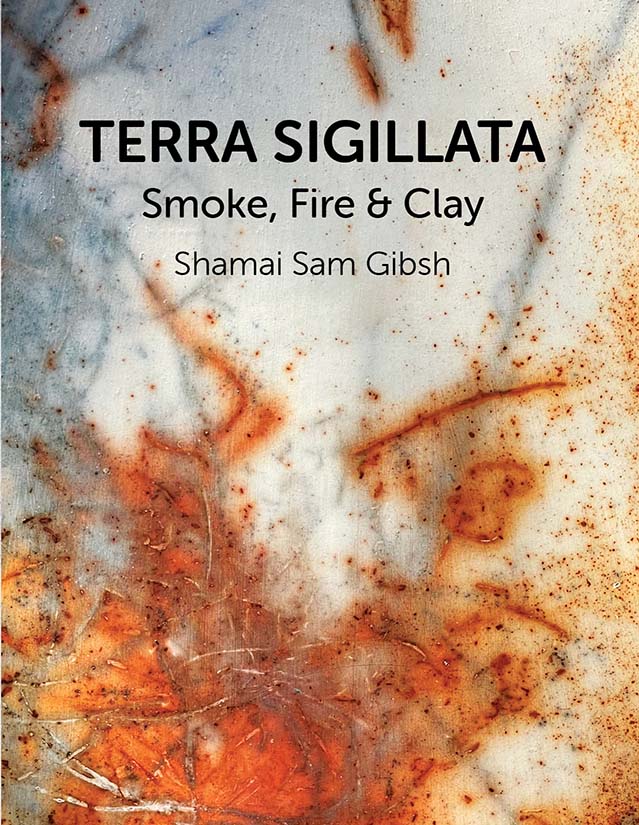
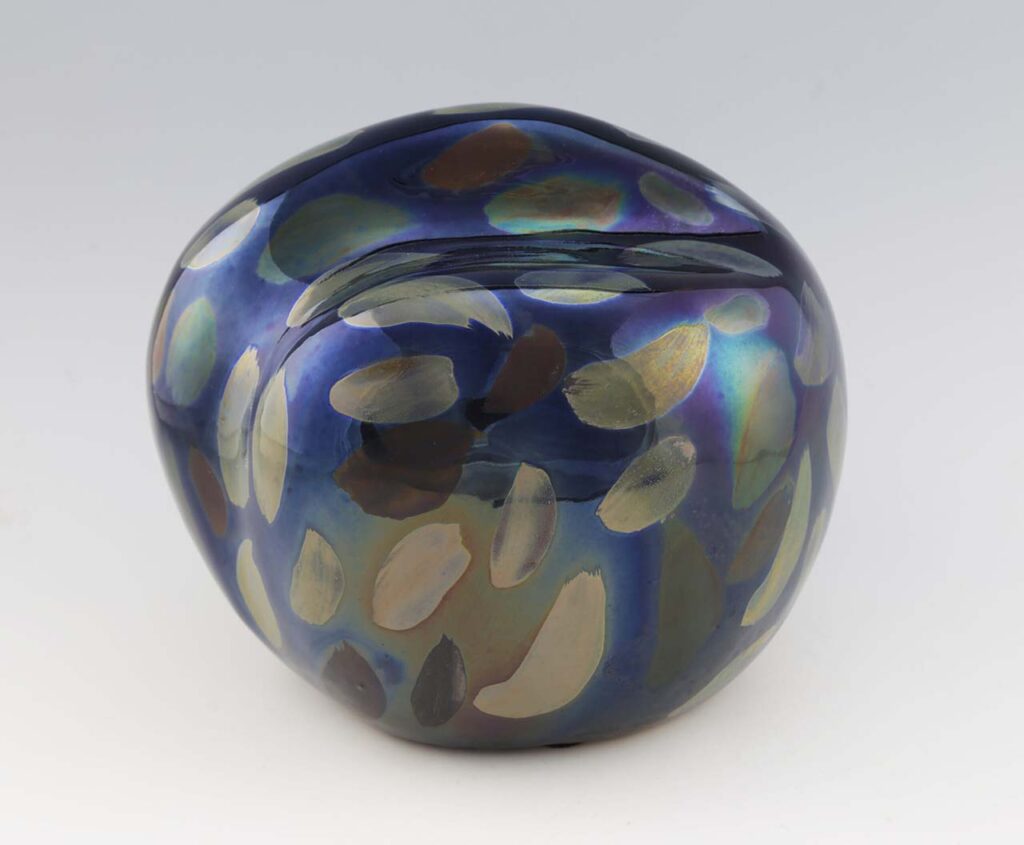
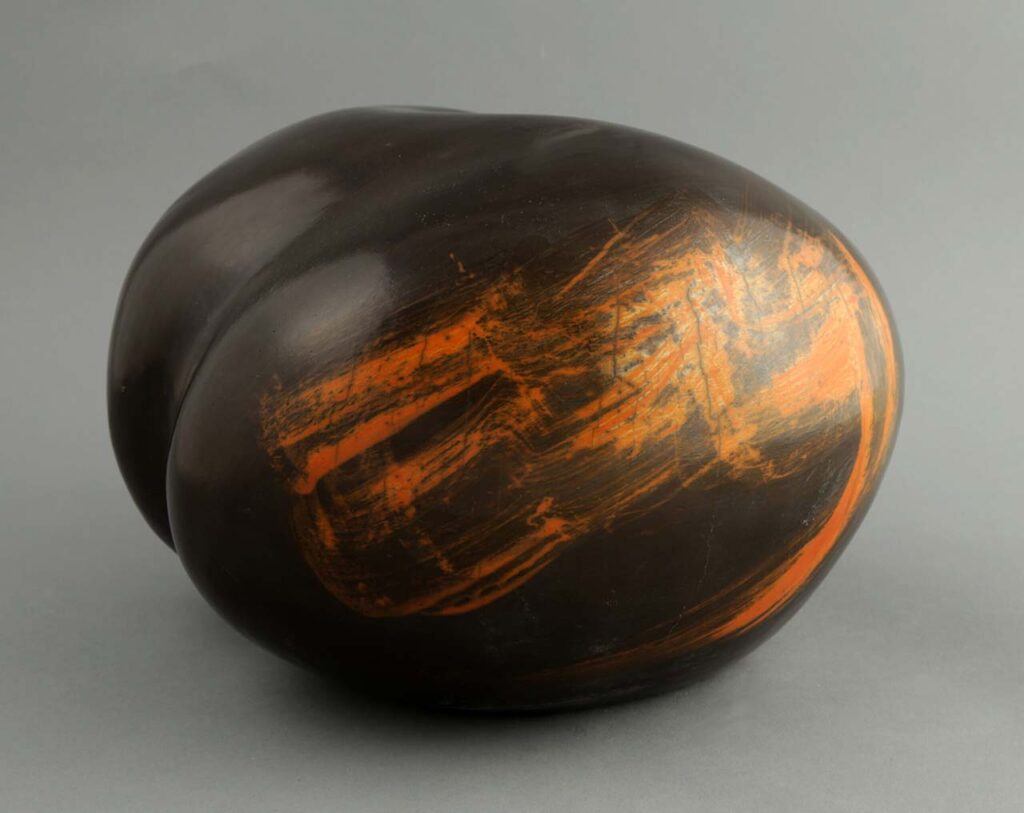
SHAMAI SAM GIBSH: Terra Sigillata, meaning sealed (stamped) clay, is a very fine clay particle slip that was originally used by the ancient Greeks and Romans to seal, stamp, and decorate vessels and artifacts. Using TS involves the process of making TS, as well as its application on clay objects. Preparing TS is achieved by collecting the smallest particles (platelets) of clay, resulting in a mixture of suspended particles that do not settle, like whipped cream. TS, which can be made of any clay, from wild clay collected in nature, as well as from industrially processed clay, is classified into two categories according to the sintering temperature: low temperature like earthenware clay, and high temperature like stoneware or ball clay.
Applying TS to a bone-dry surface is usually performed by brushing, spraying, as well as dipping, or even pouring it over the surface. The fine platelets set according to their electric charge when burnished with a cloth, resulting in a smooth and unique shiny surface.
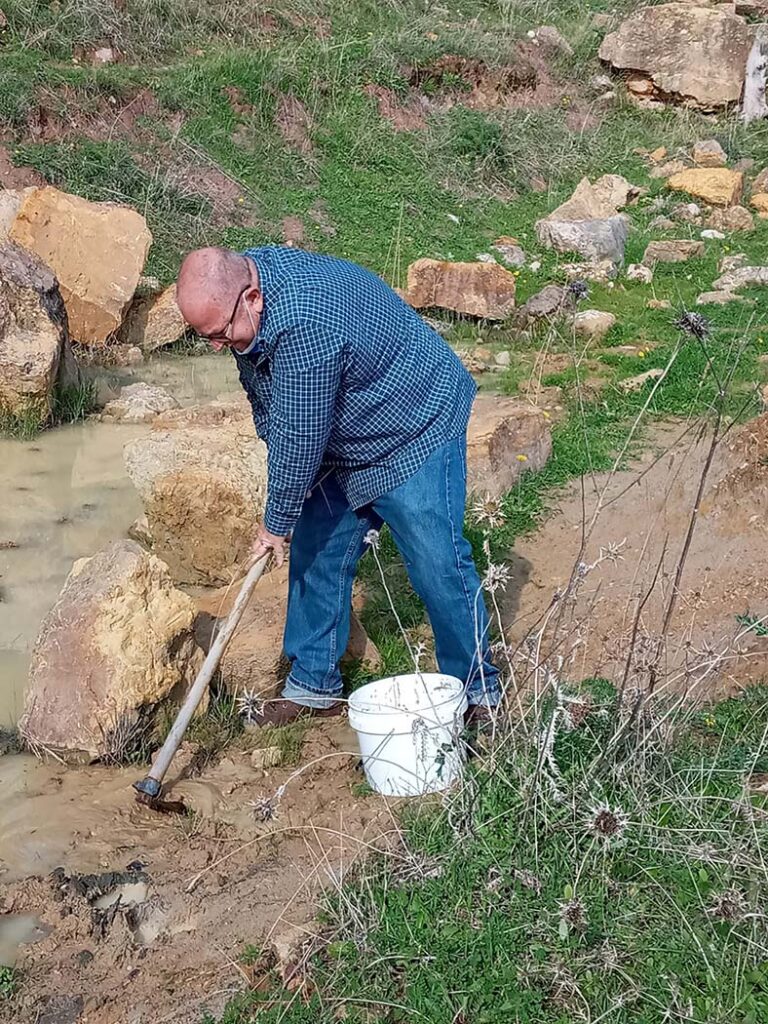

SHAMAI SAM GIBSH: Terra sigillata has been my fascination starting early in my career. Being intrigued by the effects of TS when first exposed to it in museums exhibiting ancient Greek and Roman ceramics, I investigated it and found out that TS can be made on my own by collecting clay in nature worldwide. Unlike glazes, TS represents a natural way of covering and decorating clay artifacts. Using this ancient technique, and expanding it with dozens of TS preparations, made of different clays collected worldwide, enabled me to bring the world into my work and to create an impressive palette of hues, which enriched the surfaces of my work.
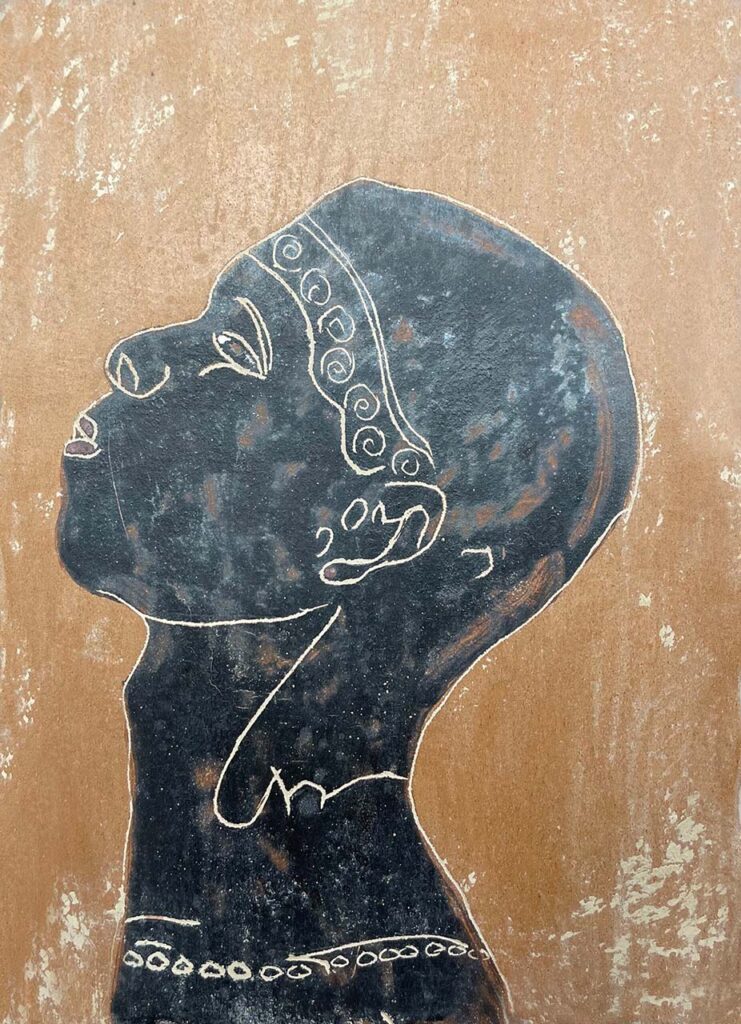
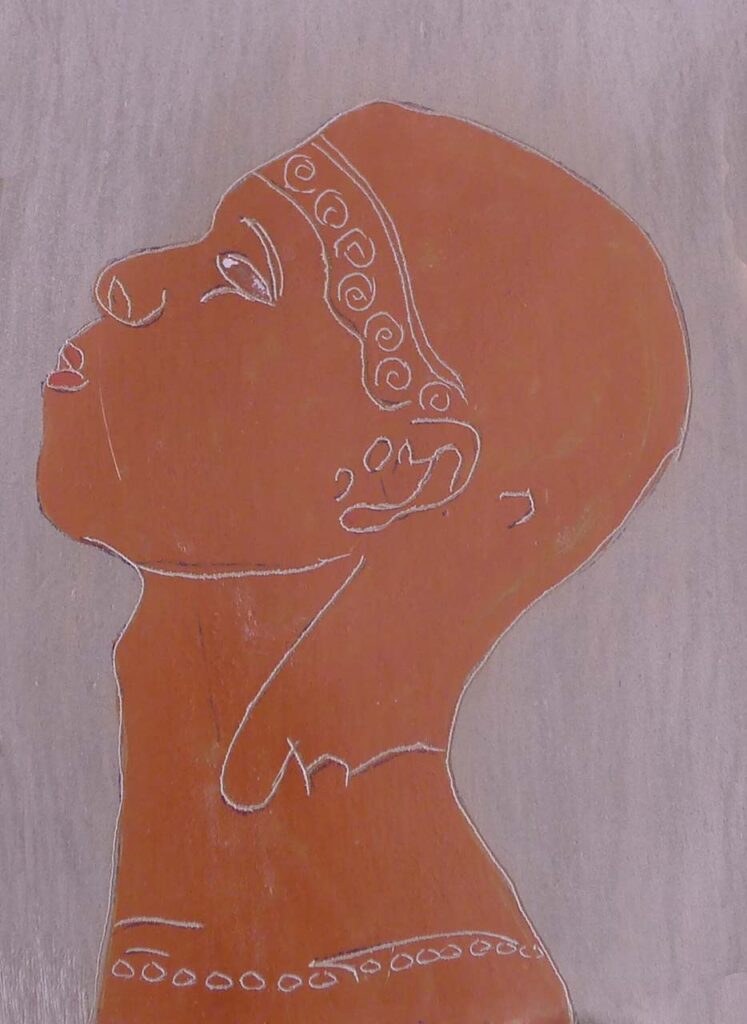
SHAMAI SAM GIBSH: I believe that it is very important to share knowledge, skills, and expertise. Throughout my career, I realized that many of my colleagues possess vast, sometimes unique, knowledge; however, some of this experience and knowledge had been lost since it was generally not shared and was never published. This, in fact, was the main motivation to write this book. While undertaking this commitment I was compelled to evaluate and reevaluate my own work and ponder on new ways of addressing terra sigillata; thus, a novel idea of shortening the process of making TS emerged as described in the book.
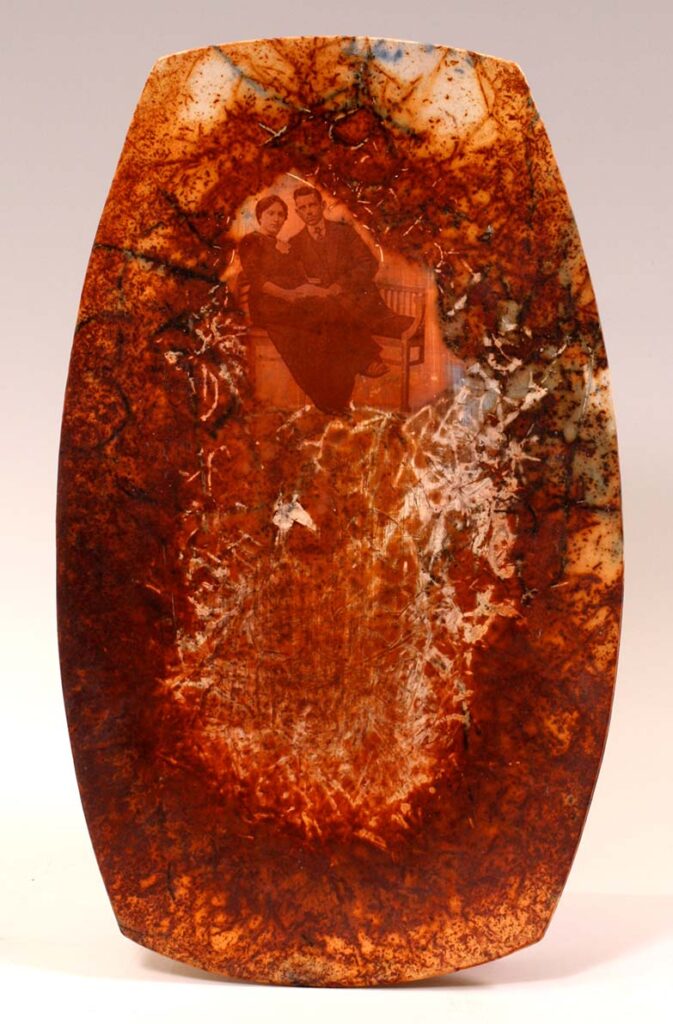
SHAMAI SAM GIBSH: I have been working and researching alternative firing techniques for many years and was very privileged to have met many wonderful ceramic artists over the years who shared their knowledge with me while actually, encouraging me to continue researching and developing new ways of looking and addressing the ceramic world. One example of such a master is Allan Cagier Smith whom I was very fortunate to have met at the Harvard ceramic program many years ago, assist him, and learn from him the way he employed luster. So, in essence, my book summarizes both my experience and the ongoing research.
SHAMAI SAM GIBSH: It was obvious for me to include some of my research on the origin of TS and Greek/Roman firing techniques. Organizing the book required several chapters, starting with terra sigillata. This was followed by instructions for building the kilns which serve most of the needed firing for all other chapters. These included TS layering techniques, saggar and other firing techniques, such as pit firing, raku, naked raku, horsehair raku, milk & egg decorating & firing, obvara, and finally Greek & Roman TS and Luster.
For me, all these are considered alternative firing techniques. Naturally, there are other “Blackening” techniques that were not included in this book and wait their turn in a future continuing project.

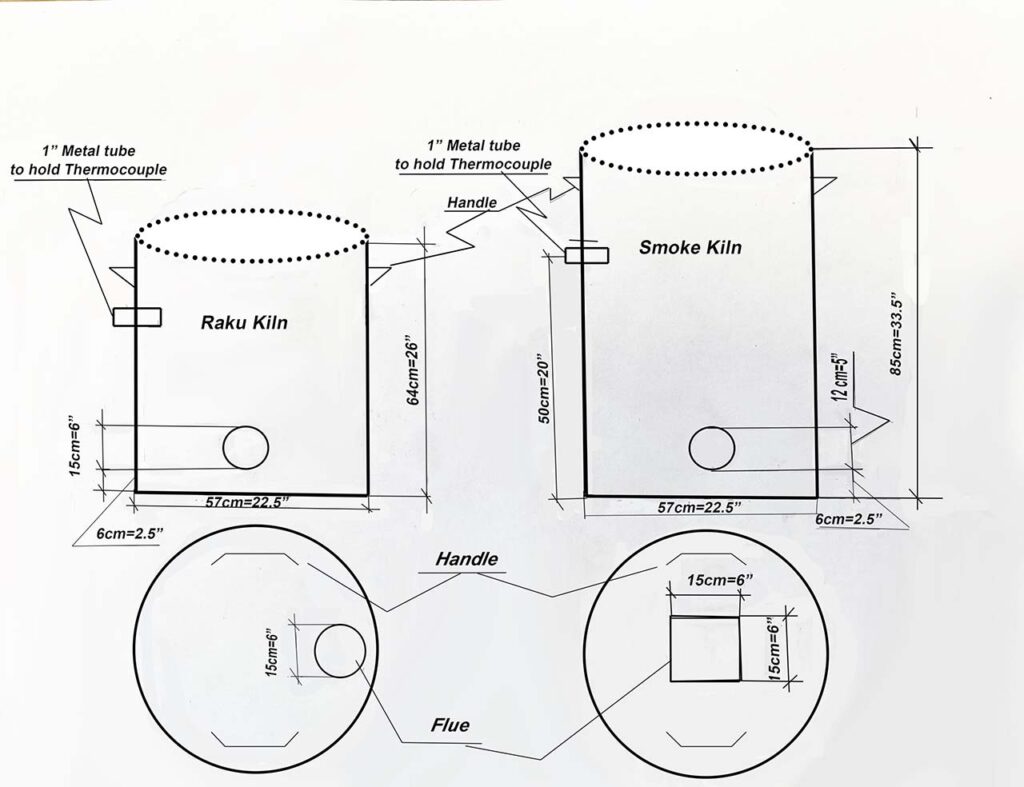
This book is not only geared toward those first encountering clay but also for artists who have decades of experience with ceramics. Was it a challenge to cater to both the novice and expert and what do you hope readers gain from reading your book?
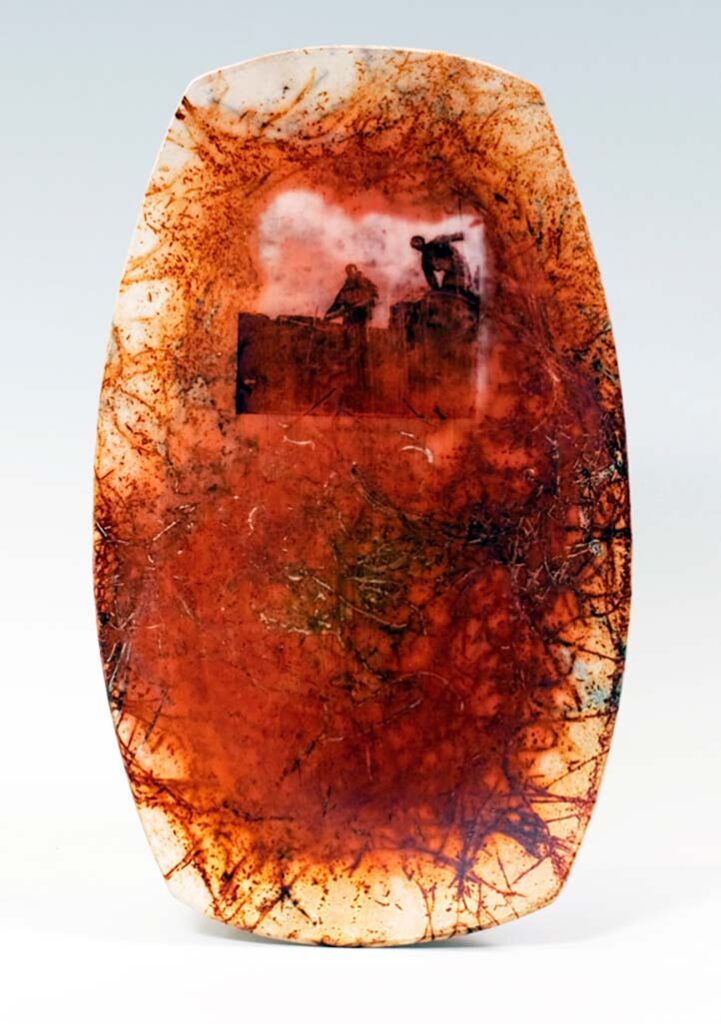
SHAMAI SAM GIBSH: Indeed, the challenge was to reconcile my wish to incorporate as many details and instructions aimed towards new ceramic artists, while keeping the more experienced readers interested. I believe that my efforts were fruitful, as they were rewarded with many positive reviews from both novice and experienced artists. As to what I hope the readers gain from my book: first to share their knowledge for the purpose of preservation; second, to open one’s mind, research and dare to experiment with unorthodox ideas and practices; and finally, maybe the most important of all, explore what you like and enjoy it to your utmost ability.
